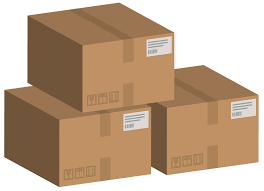Low Value Shipment (LVS) (Customs Glossary)
| This article is part of the Customs Glossary Guide |

The Low Value Shipment (LVS) program, administered by the Canada Border Services Agency (CBSA), is an initiative aimed at streamlining the customs clearance process for low-value shipments entering Canada. Under this program, eligible shipments with a declared value below a specified threshold can benefit from simplified customs procedures, leading to faster and more cost-effective cross-border trade. This article defines the Low Value Shipment program with CBSA, explores its usage scenarios, and outlines the requirements for businesses engaged in cross-border trade.
What is the Low Value Shipment Program with Canada Border Services Agency?
The Low Value Shipment (LVS) program is a facilitative program introduced by the Canada Border Services Agency to expedite the customs clearance process for qualifying low-value shipments entering Canada. The program aims to reduce administrative burdens and costs for importers by offering simplified customs procedures for eligible shipments valued below a specific threshold.
Usage Scenarios of the Low Value Shipment Program:
E-commerce and Online Retailers:
Scenario: A business in the United States sells low-value goods to Canadian customers through its online platform. LVS Program Usage: The business can utilize the Low Value Shipment program to streamline customs clearance for these low-value shipments, resulting in faster and more efficient delivery to Canadian customers.
Small and Medium-Sized Enterprises (SMEs):
Scenario: A small Canadian manufacturer exports low-value parts and components to customers in various countries. LVS Program Usage: The manufacturer can leverage the Low Value Shipment program to simplify customs procedures and reduce administrative costs for international shipments.
International Courier and Postal Services:
Scenario: An international courier company handles numerous low-value packages entering Canada daily. LVS Program Usage: The courier company can benefit from the simplified customs clearance process under the Low Value Shipment program, enabling them to deliver packages more swiftly to Canadian recipients.
Requirements in Cross-Border Trade:
To take advantage of the Low Value Shipment program, businesses must meet specific requirements:
Eligible Shipment Value:
Cross-border Scenario: A company in Mexico wants to export goods to Canada under the LVS program. Requirement: To qualify for the Low Value Shipment program, the total value of the goods in the shipment must fall below the specified threshold set by CBSA. The threshold may be periodically adjusted by CBSA based on economic and trade considerations.
Simplified Customs Documentation:
Cross-border Scenario: An e-commerce business ships low-value items from China to Canada. Requirement: Under the LVS program, businesses must complete a simplified customs declaration, which includes essential information about the shipment's contents, value, and origin. This streamlined documentation helps expedite customs processing.
GST/HST Tax Considerations:
Cross-border Scenario: A U.S.-based company ships low-value goods to Canadian consumers. Requirement: Although the LVS program simplifies customs procedures, importers must still ensure compliance with Canadian tax regulations. For shipments valued below the threshold, Goods and Services Tax (GST) or Harmonized Sales Tax (HST) may apply depending on the recipient's location.
Conclusion
The Low Value Shipment program introduced by the Canada Border Services Agency offers a significant advantage to businesses involved in cross-border trade. By simplifying customs procedures for low-value shipments, the program enables businesses to reduce administrative burdens, expedite delivery, and enhance the overall efficiency of international trade. To benefit from the LVS program, businesses must meet the eligibility criteria and adhere to the simplified customs documentation requirements while ensuring compliance with applicable tax regulations for their shipments to Canada.
